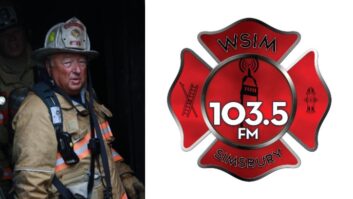The author is general manager of WQMV(AM).
WAVERLY, Tenn. — Survival in AM radio today means reaching a broader audience beyond local listeners. This includes streaming over the Internet to potential global audiences. We also have to make the most of whatever innovative opportunities come our way.
The Harris PR&E NetWave digital audio console is one innovation that is supporting our growth at WQMV(AM) 1060. NetWave enables us to serve our traditional audience and stream two channels over the Internet (accessible from www.wqmv1060.com). Soon, we’ll also be delivering WQMV’s audio over our local government access cable channel on Comcast. More important, we can produce and deliver all four live radio channels from one NetWave console, run by a single operator.
Budget considerations
We purchased the Harris PR&E NetWave digital audio console in December 2010 after considering four competing consoles, and installed it in January of 2011.
Our Harris reseller, SCMS, recommended NetWave after listening to our goals and aspirations. Though it was slightly above our planned budget, SCMS made the case that it provided all the capabilities today to expand our operation rather than having to worry about adding onto the system down the road.
The NetWave is based on next-generation, cutting-edge technology. It gives us the capability, reliability and quality to reach a broader, potentially global Internet audience while better serving our local communities. As the emergency broadcaster for our county, we need a console with solid dependability, especially given the sudden storms and floods that can plague our region.
While we transmit at 1,000 watts by day, our power drops to only 4 watts by night, making it difficult for listeners in our coverage area — Waverly, McEwen, New Johnsonville and other communities in Humphreys County, Tenn. — to receive a strong signal. The cyber radio channels give our audience the flexibility to listen with the excellent audio quality they expect.
Our previous audio console could at best give us mock stereo — essentially two channels of mono. The NetWave produces clear, crisp digital stereo audio, which is critical for those listening through multiple speakers on their desktop PCs or Internet radio systems.
With only nine full-time staffers, we couldn’t accomplish all of the tasks necessary to manage multiple stations were it not for this board. Like many AM radio stations, we also have space and budget constraints, and this system packs a lot of features into a small form-factor.
The WQMV program day is a fresh, original format mixing oldies, Billboard hits and eclectic songs from the mid-1950s through mid-1980s. We also offer live news, sports call-in shows and live remotes of high school football and basketball games. We can run two feeds through NetWave if there are two games at the same time, with digital outputs feeding two separate cyber channels so fans can choose the live game they want to hear.
Live inputs to the board include: on-air announce microphones, one guest microphone and several mics in an adjacent guest studio. We also feed two CD players, a 360 Systems DigiCart system for commercials and promos and a computer automation system, which feeds digital music selections from our 6,000-title library.
Telephone calls run through the board, and callers receive a mix-minus output so they don’t hear their own voices feeding back when we talk to them live. A 360 Systems ShortCut digital recorder, another NetWave input, can record calls so the auxiliary console in our production area can edit them for later replay. NetWave also has add-on interfaces for the phone line and a profanity delay.
Local sports remotes come into the studio over a high-quality digital phone, cellphone line or phone hybrid. We also air live football games on the University of Tennessee’s Vol Network and Tennessee Titans NFL football games on both the Titans Radio Network and ABC Radio. Additionally, we air syndicated shows from Citadel Media.
The NetWave has many operators, given our numerous music blocks and locally produced shows such as “Vols Calls,” “Humphreys County Sports Wrap-Up Show” and “Tennessee Valley Views.”Each announcer can monitor each channel and drop-in commercials while on the air.
The engineering staff built a high-performance network between studios. Studio guests can hear the air signal and our production tech can record and transfer local spots to our DigiCart for seamless on-air use. The NetWave audio levels are preset to an optimal range so the announcers never have to worry about adjusting levels on any input signal. Audio quality remains even from one show to the next.
I have found that NetWave is an ideal choice for an AM operation looking to expand operations and deliver a high-quality, “cyber” radio product. It’s a robust, innovative, dynamic solution that has proven to be an excellent investment and platform for future growth.
For information, contact Harris at (800) 231-9673 or visit www.broadcast.harris.com.







